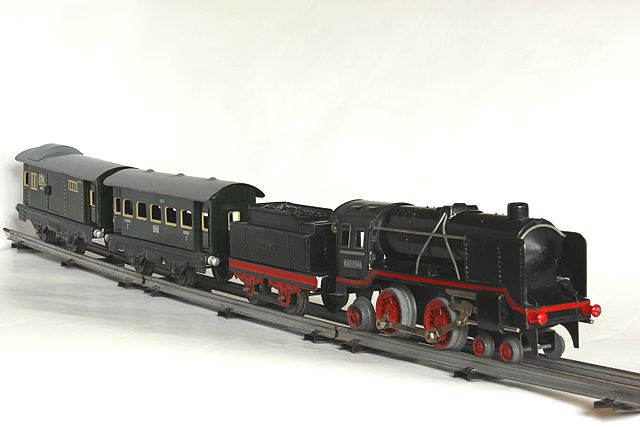O scale is a scale commonly used for toy trains and rail transport modelling. Introduced by German toy manufacturer Märklin around 1900, by the 1930s three-rail alternating current O gauge was the most common model railroad scale in the United States and remained so until the early 1960s. In Europe, its popularity declined before World War II due to the introduction of smaller scales.
Australian O scale model railway
British outline O gauge model railway at Kew Pumping Station
Typical US O-Scale locomotive
Probably the oldest known 0e gauge vehicles in the MCB from 1947. WAB rack railway train, 2021
A toy train is a toy that represents a train. It is distinguished from a model train by an emphasis on low cost and durability, rather than scale modeling. A toy train can be as simple as a toy that can run on a track, or it might be operated by electricity, clockwork or live steam. It is typically constructed from wood, plastic or metal. Many of today's steam trains might be considered as real ones as well, providing they are not strictly scale or not enough detailed ones in favor of a robustness appropriate for children or an inexpensive production.
0 gauge toy train made by Distler operated by clockwork around 1950
O gauge tinplate trains by Hornby
An O gauge Marx toy train set made in the late 1940s or early 1950s
A colorful EMD GP40-2 emblazoned with the Chessie System logo, one of many wooden toy trains offered by Whittle Shortline








